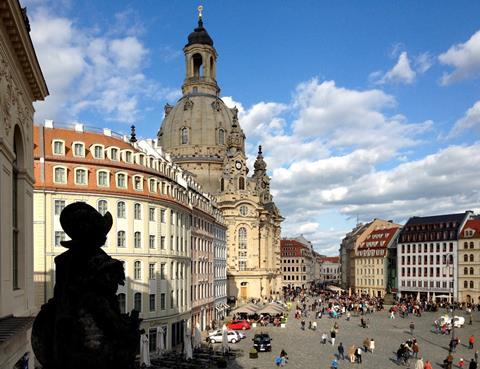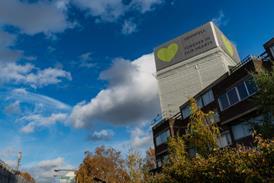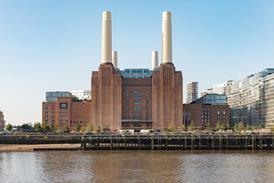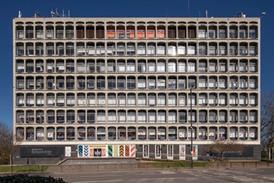Leon Furkert of the Dresden Historical Society shares the story of Dresden’s renaissance

Coventry and Dresden are not just twin cities; they also shared the fate of destruction by air raid during the second world war. In February 1945, the whole inner city of Dresden was heavily bombed. Hardly any building survived the night. The famous Frauenkirche (Church of our Lady) imploded and remained in ruins for decades.
But Dresden had not just been any old city: home to the Saxon princes since the middle ages, a treasury of art and architecture, famous as ’the Florence of the north‘ with stunning baroque monuments such as the Frauenkirche and the Zwinger (a palatial complex with gardens), and immense art collections all topped off by a balmy Mediterranean climate.
After 1945, the Neumarkt, the city’s former heart, was a wide and an empty place. In the immediate post-war period during the early ‘German Democratic Republic’, many remaining ruins were demolished, though others such as the Zwinger were restored to their pre-war appearance. Increasingly however, Dresden received a new face, mostly modernist and ignoring the traditional street pattern. Luckily, the historic centre with the Neumarkt remained empty of new construction. The chance of rebuilding remained alive.
Over time, the relationship between East Germany’s socialist and their own cultural heritage evolved. From the 1970s onwards, restoration increasingly replaced destruction. The famous Semper opera house was rebuilt and architects developed plans to redesign the Neumarkt. Although they hardly included any historic reconstruction, its redevelopment as an urban centre was an important basis for later rebuilding.
Shortly after the collapse of East Germany in 1990, hope arose among Dresden’s residents that they might finally heal the city’s still openly visible wounds. It all began with the ‘Ruf aus Dresden’ (or ‘call from Dresden’) in which prominent citizens called for the reconstruction of the lost Frauenkirche. Rebuilding began in 1993 and the new church, gloriously luminous and beautiful, was reconsecrated in 2005.

But what about the square around it? Some politicians and architects still dreamed of a radical modernist city centre and started planning it. However, Dresden’s citizens resisted this. They wanted their old town back, restored to its former, historically grown identity. In 1999, they formed the Society for the Historic Neumarkt (or Gesellschaft Historischer Neumarkt) with the aims of reconstructing as many historic buildings as possible. With architects, art historians, and many other disciplines involved, they started mobilizing the people for their ideas. They got in touch with decision-makers and investors and tried to convince them with historic construction plans, old pictures and professional advice.
In 2002, the Society for the Historic Neumarkt organized a municipal referendum. This was the tipping point: over 60,000 people signed for a rebuilt Neumarkt in its historical shape. This set the direction for years to come. One might think that this was an easy task. However, the debate was very controversial. Over the years, the Gesellschaft Historischer Neumarkt had to do hard work for each quarter, street, and façade to prevent architects and town planners from undermining the vision. But the people were consistently on their side.
For me as a citizen of Dresden, walking through the historic centre today is like a dream come true. Dresden has its heart, its old town back. Even more should arise in the future. The Gesellschaft Historischer Neumarkt is continuing its work to heal Dresden’s wounded streets and bring them back to life. The restitching of Dresden is not complete but it is underway. Thank heavens.
>> Also read: Rebuild the Mack, but why stop there?
>> Also read: Modernist dogma should not prevent us from rebuilding the Crooked House
Postscript
This article was originally published to accompany Create Streets’s Restitch social fabric summit, held in Coventry, 7-8 March 2024.
Leon Furkert is a volunteer with the Dresden Historical Society and currently works as a consultant on delivering structural change within the Saxony brown coal mining regions.
















3 Readers' comments